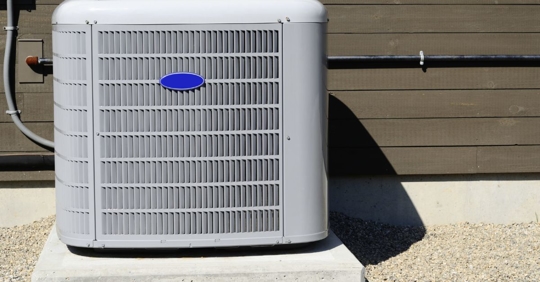Understanding HVAC Sizing Fundamentals
Calculating the Load: The Importance of Manual J
When it comes to HVAC sizing, one of the most critical steps is the Manual J calculation process. This meticulous procedure involves determining the precise heating and cooling load requirements of a building, which is essential for selecting an appropriately sized system. Manual J takes into account a variety of factors, including the building's orientation, insulation levels, window types, and local climate. It's not just about comfort; an accurately sized HVAC system operates more efficiently, saving homeowners money on energy bills and reducing wear and tear on the equipment. By avoiding the pitfalls of oversizing or undersizing, Manual J ensures that the system you choose is tailored to your specific needs, providing optimal performance and longevity.
Square Footage vs. Efficiency: Debunking Common Misconceptions
Many homeowners believe that HVAC sizing can be boiled down to a simple calculation based on square footage. However, this approach is fraught with misconceptions and can lead to significant inefficiencies. The truth is, square footage is just one piece of the puzzle. Energy efficiency plays a crucial role in system sizing. Factors such as the building's thermal envelope, air leakage, and the efficiency of appliances and lighting all influence the heating and cooling demands. An energy-efficient home may require a smaller system than a less efficient space of the same size. By understanding the interplay between square footage and energy efficiency, homeowners can make more informed decisions and invest in a system that is not only the right size but also cost-effective in the long run.
Selecting the Appropriate HVAC System Type
Types of HVAC Systems: Pros and Cons
Navigating the array of HVAC system types can be daunting, but understanding the pros and cons of each option is key to making the right choice. Split systems, which separate the condenser and the air handler, offer flexibility in installation and are commonly used in residential settings. Packaged units, on the other hand, combine all components in a single outdoor unit, which can be advantageous for space-saving. Heat pumps provide an energy-efficient alternative to traditional heating and cooling systems by transferring heat rather than generating it. Each system type comes with its own set of advantages and disadvantages, such as cost, installation complexity, and maintenance requirements. By weighing these factors, homeowners can select a system that aligns with their needs, preferences, and budget.
Matching System Type to Climate Conditions
The climate in which you live plays a pivotal role in determining the most suitable HVAC system for your home. In regions with extreme temperatures, a robust system with a high capacity for heating or cooling may be necessary. Conversely, in milder climates, a system with lower capacity but higher efficiency could be more appropriate. For example, heat pumps are particularly effective in areas with moderate temperatures, as they can efficiently transfer heat without excessive energy consumption. In colder climates, however, a dual-fuel system that combines a heat pump with a gas furnace might be the best option to ensure reliable warmth. Bridgewater, MA residents need to consider the often harsh New England winters and humid summers when selecting their HVAC system, ensuring it can handle the diverse weather conditions.
Energy Efficiency and HVAC Sizing
Understanding SEER, EER, and AFUE Ratings
Energy efficiency ratings such as SEER (Seasonal Energy Efficiency Ratio), EER (Energy Efficiency Ratio), and AFUE (Annual Fuel Utilization Efficiency) are critical indicators of an HVAC system's performance. SEER, which applies to air conditioning and heat pump cooling, measures the cooling output over a typical cooling season divided by the energy consumed. The higher the SEER rating, the more efficient the system. EER, on the other hand, represents the system's efficiency at peak operating conditions. AFUE measures the efficiency of furnaces and boilers, indicating the percentage of fuel converted to heat. Understanding these ratings is essential for homeowners to select a system that not only meets their sizing requirements but also operates efficiently, minimizing environmental impact and reducing energy costs over time.
The Role of Insulation and Air Sealing in Sizing
A well-insulated and tightly sealed home directly impacts the sizing of an HVAC system. Proper insulation reduces the amount of heat that escapes during the winter and keeps heat out during the summer, thereby decreasing the demand on the HVAC system. Similarly, air sealing eliminates leaks and drafts, further stabilizing the indoor environment. These factors mean that a smaller, more efficient HVAC system can often provide the same level of comfort as a larger system in a poorly insulated and leaky house. For homeowners in Bridgewater, MA, investing in insulation and air sealing can lead to significant savings, as it allows for the installation of a smaller HVAC system that is less expensive to operate and maintain, while still maintaining a comfortable home year-round.
Advanced Considerations for HVAC Sizing
Zoning Systems and Variable Speed Technology
Advanced HVAC technologies such as zoning systems and variable speed technology can greatly influence the sizing and efficiency of your heating and cooling system. Zoning systems allow for customized temperature control in different areas or "zones" of the home, which can reduce the overall load on the HVAC system by heating or cooling only the areas in use. Variable speed technology, found in some of the latest HVAC models, adjusts the speed of the compressor and fans to match the exact requirements of the home at any given time. This precision control leads to enhanced comfort, reduced energy consumption, and can influence the size of the system needed. When considering an HVAC upgrade, homeowners should explore these advanced features, as they can contribute to a more tailored, efficient, and cost-effective heating and cooling solution.
The Impact of Ductwork on HVAC Sizing
Ductwork is the circulatory system of your HVAC unit, and its design and condition have a significant impact on the sizing and efficiency of your system. Properly designed and installed ductwork ensures that air is distributed evenly throughout your home, without loss or restriction. Common issues such as leaks, kinks, or inadequate insulation in ductwork can lead to loss of efficiency and increased energy costs. In some cases, these issues can also necessitate a larger system to compensate for the lost heating or cooling. For optimal performance, ductwork should be inspected and corrected as part of the HVAC sizing process. Homeowners in Bridgewater, MA, should consider the state of their ductwork when sizing their HVAC system to ensure that it operates at peak efficiency.
Choosing an HVAC Contractor and Next Steps
Qualifications and Questions to Ask Potential Contractors
Selecting the right HVAC contractor is as crucial as choosing the appropriate system. Homeowners should look for contractors with proper certifications, such as NATE (North American Technician Excellence), and a solid track record of quality installations. It's important to ask potential contractors about their experience, as this will ensure they size the system correctly. Inquire about their approach to evaluating the home's insulation and ductwork, as these factors will affect the system's performance. Additionally, ask for references and check reviews to gauge the contractor's reputation. A trustworthy contractor will be transparent about their process and willing to provide the necessary information to make you feel confident in your decision.
Post-Installation: Maintenance and Performance Monitoring
After the installation of your new HVAC system, ongoing maintenance and performance monitoring are key to ensuring it continues to operate at the intended efficiency and capacity. Regular maintenance can prevent unexpected breakdowns, extend the life of the system, and keep energy costs down. Homeowners should establish a routine maintenance schedule with their HVAC contractor, including tasks such as filter changes, cleaning of coils, and checking refrigerant levels. Performance monitoring can also identify any issues early on, allowing for adjustments or repairs before they become major problems. For residents of Bridgewater, MA, partnering with a local HVAC service like S & B Mechanical ensures that your system receives the care it needs to provide reliable comfort throughout the seasons.
S & B Mechanical Is Here to Help You Make the Right Decision
Are you a homeowner or business looking to install or upgrade your HVAC system? S & B Mechanical is here to guide you through the process, ensuring you get a system that's perfectly sized for your needs. Our team of certified professionals is dedicated to providing top-notch HVAC services and energy-efficient solutions.
Contact us online or call (508) 290-4404 to discuss your HVAC needs and discover how we can enhance the comfort and efficiency of your space.

